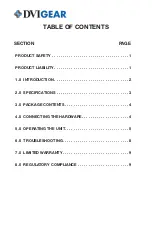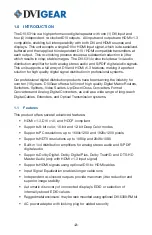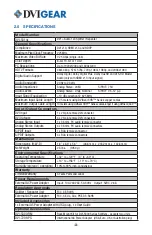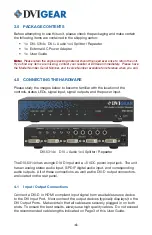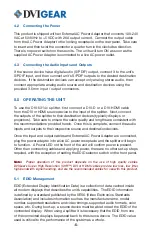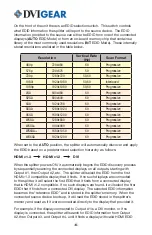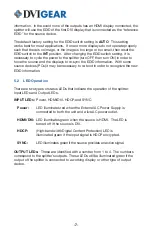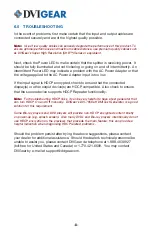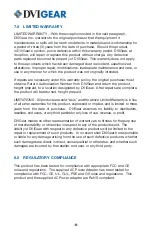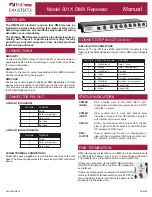
-7-
information. In the event none of the outputs has an HDMI display connected, the
splitter will use the EDID of the first DVI display that is connected as the “reference
EDID” for the source device.
The default factory setting for the EDID switch setting is
AUTO
. This setting
works best for most applications. If one or more displays do not operate properly
such that there is no image, or the image is too large or too small, then reset the
EDID switch to the
INT
position. After changing the EDID switch setting, it is
necessary to cycle the power to the splitter (turn OFF, then turn ON) in order to
force the source and the displays to re-sync the EDID information. With some
source devices (PCs) it may be necessary to re-boot in order to recognize the new
EDID information.
5 .2 LED Operation
There are two types of status LEDs that indicate the operation of the splitter:
Input LEDs and Output LEDs.
INPUT LEDs:
Power, HDMI/DVI, HDCP, and SYNC
Power:
LED illuminates red when the External AC Power Supply is
connected to both the unit and a live AC power outlet.
HDMI/DVI:
LED illuminates green when the source is HDMI. The LED is
turned off if the source is DVI.
HDCP:
(High-bandwidth Digital Content Protection) LED is
illuminated green if the input signal is HDCP encrypted.
SYNC:
LED illuminates green if the source provides an active signal.
OUTPUT LEDs:
These are identified with a number from 1 to 4. The numbers
correspond to the splitter’s outputs. These LEDs will be illuminated green if the
output of the splitter is connected to a working display or other type of output
device.


